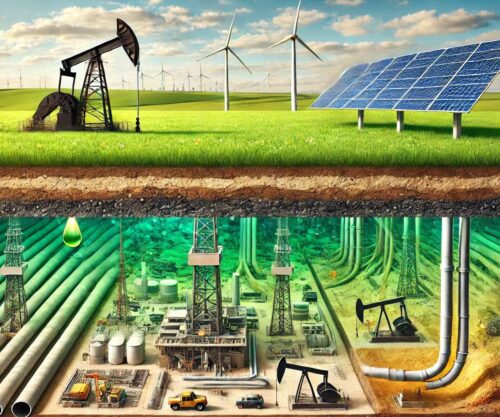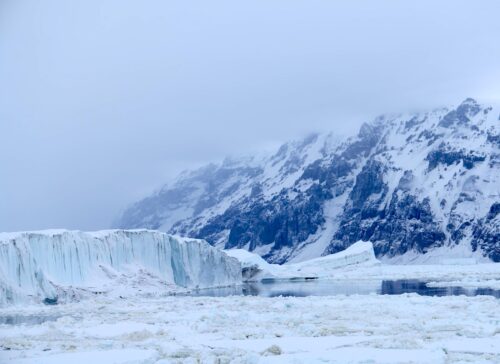
Coral cover is breaking records, real-world data proves ocean life loves CO2, but none of this impedes a never-ending drip feed of ocean acidification scares. [emphasis, links added]
‘Ticking time bomb’: Ocean acidity crosses vital threshold, study finds
BY SAUL ELBEIN – 06/09/25 11:24 AM ET
The deep oceans have crossed a crucial boundary that threatens their ability to provide the surface with food and oxygen, a new study finds.
Nearly two-thirds of the ocean below 200 meters, or 656 feet, as well as nearly half of that above, have breached “safe” levels of acidity, according to findings published on Monday in Global Change Biology.
The fall in ocean pH is “a ticking time bomb for marine ecosystems and coastal economies,” Steve Widdicombe, director of science at the United Kingdom’s Plymouth Marine Laboratory (PML), said in a statement.
The study was funded in part by the National Oceanographic and Atmospheric Administration (NOAA), a federal agency that has been targeted for steep cuts by the Trump White House, in large part because of its role in investigating climate change.
…
The referenced study:
Ocean Acidification: Another Planetary Boundary Crossed
Helen S. Findlay, Richard A. Feely, Li-Qing Jiang, Greg Pelletier, Nina Bednaršek
First published: 09 June 2025
Funding: This work was supported by the European Space Agency, AO/1-10757/21/I-DT. Natural Environment Research Council, NE/X006271/1. NOAA’s Global Ocean Monitoring and Observing and Ocean Acidification Programs, GOMO Fund Reference Number 100018302 and OAP NRDD. Slovene Research Agency, N1-0359. Climate Program Office, NA19NES4320002, NA210AR4310251.
ABSTRACT
Ocean acidification has been identified in the Planetary Boundary Framework as a planetary process approaching a boundary that could lead to unacceptable environmental change. Using revised estimates of pre-industrial aragonite saturation state, state-of-the-art data-model products, including uncertainties, and assessing impact on ecological indicators, we improve upon the ocean acidification planetary boundary assessment and demonstrate that by 2020, the average global ocean conditions had already crossed into the uncertainty range of the ocean acidification boundary. This analysis was further extended to the subsurface ocean, revealing that up to 60% of the global subsurface ocean (down to 200 m) had crossed that boundary, compared to over 40% of the global surface ocean. These changes result in significant declines in suitable habitats for important calcifying species, including a 43% reduction in habitat for tropical and subtropical coral reefs, up to 61% for polar pteropods, and 13% for coastal bivalves. By including these additional considerations, we suggest a revised boundary of 10% reduction from pre-industrial conditions more adequately prevents risk to marine ecosystems and their services, a benchmark that was surpassed by the year 2000 across the entire surface ocean.
Read more: https://onlinelibrary.wiley.com/doi/10.1111/gcb.70238
The ocean acidification “boundary” is based on Aragonite saturation. Aragonite is a form of calcium carbonate. Marine animals use calcium carbonate to form shells and coral structures.
The theory is that if Aragonite saturation drops below one (biased towards dissolution), shellfish and corals will find it difficult to build the calcium carbonate structures they depend on for survival.
Of course, determining habitable Argonite saturation levels is complicated by substantial natural variability:
…Ocean Ω conditions vary significantly across the globe, with levels in tropical regions being more than twice as high as those in polar regions (Feely et al. 2023; Jiang et al. 2015). These regional and seasonal gradients exists due to temperature-driven CO2 solubility, enabling colder high-latitude waters to store more CO2, along with other factors including circulation of carbon away from the surface into deeper waters, mineral inputs from land and freshwater dilution (Jiang et al. 2019; Orr et al. 2005). Marine life is exposed to such regionally varying gradients to which it has evolutionarily adapted (Vargas et al. 2022), resulting in a wide variability of observed responses to OA found in laboratory experiments. However, the envelope of the overall conditions experienced by organisms is also changing due to OA, which can make scaling up from single-species experiments to ecosystem predictions more complicated. This is particularly true when we consider the other challenges of scaling, including incubation effects, lack of natural variability and lack of adaptation and/or acclimation.
…
Aragonite saturation state (ΩArag) has emerged as a key indicator for OA, reflecting the precipitation/dissolution tendencies of CaCO3, as well as its association with marine calcifiers. Consequently, the global mean surface ΩArag was chosen as the OA indicator in the planetary boundary assessments (Rockström et al. 2009). The boundary was set at 80% of the pre-industrial ΩArag value, that is, a 20% reduction from the pre-industrial surface ocean average. This level was chosen based on two criteria: first to keep high-latitude surface waters above ΩArag undersaturation; and second, to ensure adequate conditions for most warm-water coral reef systems (Rockström et al. 2009). …
Read more: same link as above
Given the immense natural variability and high genetic mobility of shellfish and corals, many of which reproduce by emitting vast numbers of microscopic larvae, setting the boundary condition at 80% of preindustrial looks suspiciously like a guess.
Is there a way we can test this 80% boundary?
The solution, of course, is to look at how fish and shelled creatures living in extreme environments cope with acidification.

And there are few places more extreme than “champagne reefs”, patches of ocean where a constant source of volcanic gas keeps seawater supersaturated with CO2, well beyond anything we could ever achieve with anthropogenic emissions.
Evidence trumps guesswork.
Given proof that fish and shelled organisms can thrive in the most extraordinary ocean CO2 levels, and the likelihood that many of those organisms have genetically compatible relatives that live outside natural CO2-saturated regions, perhaps it is time to revise that 80% boundary.
Read more at Climate Realism



















Upon reviewing the actual Ph values you will see that the Ph has only changed a minute amount in the last 50 years. This minute amount is well within the standard deviation of the year to year values. Variations in geological emissions of heat and chemicals affects Ph. Measuring the Ph in a huge volume of seawater requires thousands of devices. Keep in mind that ocean currents at various depths of have differing Ph.
I had never heard of the “Slovene Research Agency”, so, I tried DuckDuckGo. Came across the following:
(Quote) The Slovenian Research and Innovation Agency (ARIS) as an independent public funding organisation performing tasks related to the National Research and Development Programme and creation of European Research Area. The Agency aims to provide the scientific community with instruments enabling stable funding of scientific excellence. The Agency follows the policies of open science, scientific integrity, gender diversity and operates in line with the national research and innovation strategy. (End quote)
When they take the trouble to mention that they have a policy of “gender diversity” I start to wonder about the types of research they are funding, and just where their “public funding” is coming from.